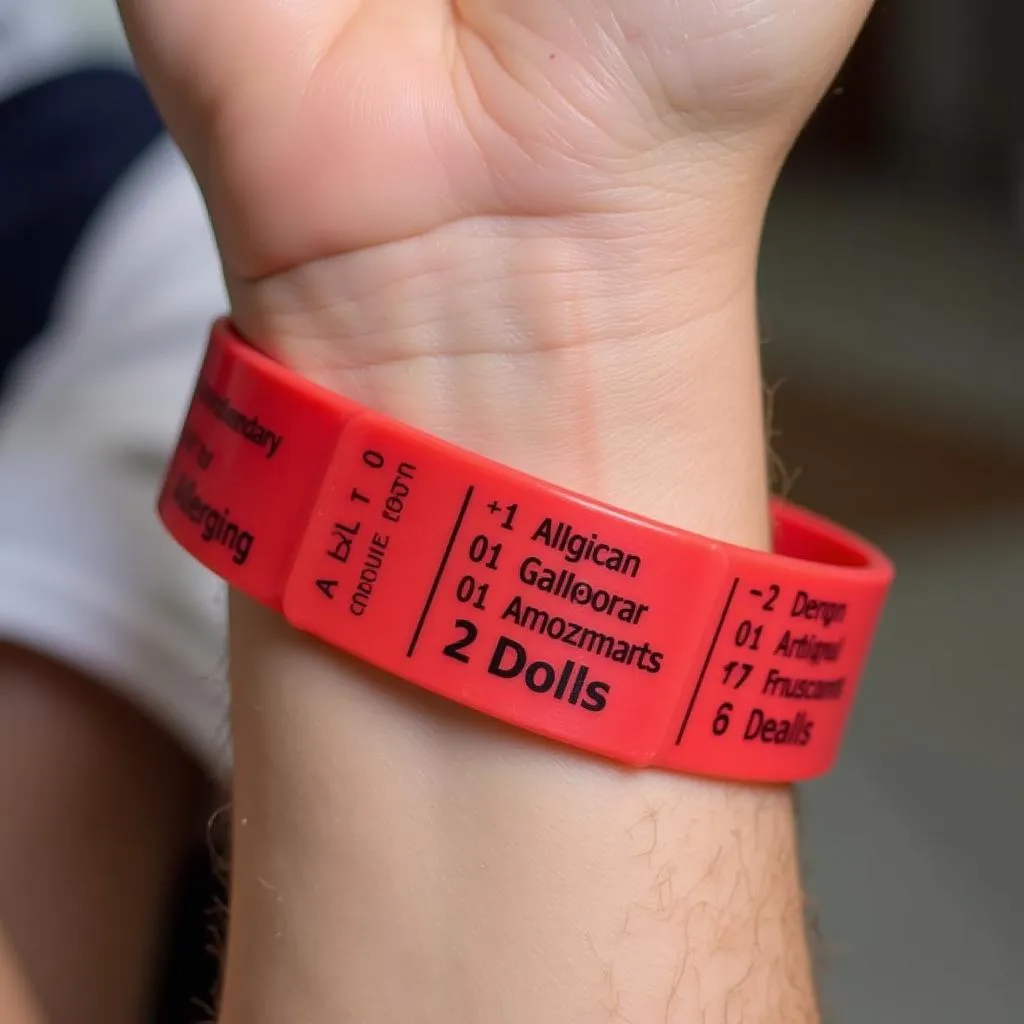Have you ever visited a hospital and noticed patients with different colored wristbands? Hospitals use a color-coded system for wristbands to quickly communicate important information about a patient’s condition and needs. While these colors can vary between hospitals, a red wristband often signifies a specific medical concern. This article will delve into the meaning of a red band in a hospital, common reasons for its use, and address some frequently asked questions.
Decoding the Red Wristband: What Does It Mean?
In many hospitals, a red wristband is a visual alert indicating an allergy. This simple band serves as a crucial communication tool for healthcare professionals, signaling that the patient has one or more known allergies.
 Patient with a red allergy wristband in a hospital setting
Patient with a red allergy wristband in a hospital setting
The presence of a red band urges caution and prompts medical staff to review the patient’s allergy information before administering any medication, food, or treatment. This precaution helps prevent potentially life-threatening allergic reactions.
Why Are Allergies Taken So Seriously in Hospitals?
Allergies are a significant health concern, and in a hospital setting, where various medications and substances are frequently used, the risk of an allergic reaction is heightened. A severe allergic reaction, known as anaphylaxis, can be life-threatening and requires immediate medical attention.
 Doctor meticulously reviewing a patient's allergy information on a medical chart
Doctor meticulously reviewing a patient's allergy information on a medical chart
By using a red wristband, hospitals aim to:
- Raise awareness: The bright red color serves as an immediate visual cue for all healthcare personnel.
- Prevent errors: It acts as a constant reminder to double-check allergy information, minimizing the risk of accidental exposure.
- Ensure patient safety: By quickly identifying patients with allergies, hospitals can provide timely and appropriate care, ultimately ensuring their well-being.
What Information Does a Red Wristband Convey?
While the red color primarily signals an allergy, the wristband itself usually carries additional details. You might find:
- The word “Allergy” clearly printed on the band.
- Specific allergens listed: This could include medications like penicillin, food allergies like peanuts, or environmental allergies like latex.
- Patient’s identification details: Name and date of birth for accurate identification.
 Close-up view of a red wristband with detailed allergy information
Close-up view of a red wristband with detailed allergy information
What Should I Do if I See Someone with a Red Wristband?
Respecting patient privacy is paramount. A red wristband is a medical alert, and it’s important to remember that it’s part of a patient’s private health information. Therefore, it’s crucial to:
- Avoid drawing attention to the wristband.
- Refrain from asking the individual about their allergies.
- Never attempt to remove or tamper with the wristband.
Conclusion
The red wristband in a hospital setting, primarily signifying allergies, plays a vital role in patient safety. It serves as a constant visual reminder for healthcare professionals to prioritize allergy awareness, ensure accurate information verification, and ultimately provide the safest care possible. Understanding the significance of these color-coded systems allows us to appreciate the measures taken to protect patients and promote well-being within a healthcare environment.